
Bob's Red Mill
In July we hosted an exchange student from Beijing. Each day his class took a field trip to some place notable in Oregon: the coast, Mt Hood, downtown Portland, the Columbia River Gorge. Oddly enough, one of the field trips they took was to Bob's Red Mill. I tagged along that day.
First we went to Bob's store and cafe.
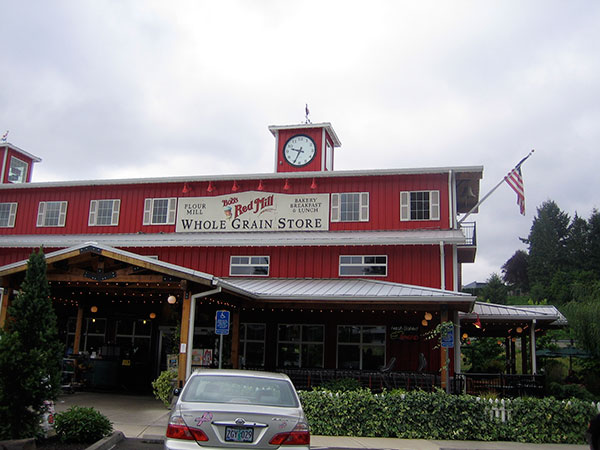
The last time I was here the store and cafe were pretty small, but it has been greatly expanded.
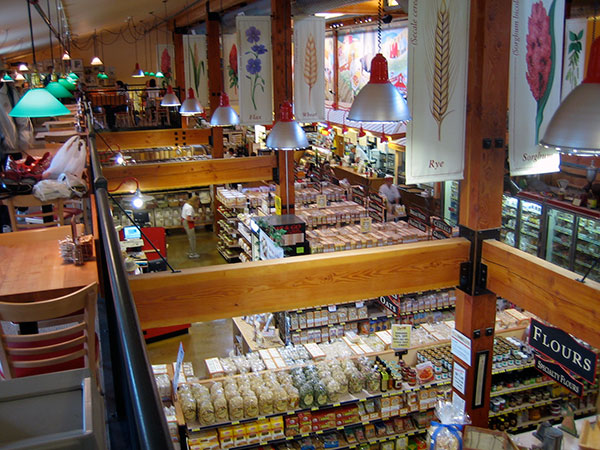
The cafe featured pancakes and hot cereals that featured Bob's grains. I stuck with their whole wheat biscuits and jam, which were excellent.
After breakfast we went for a tour of their new warehouse and production facility.
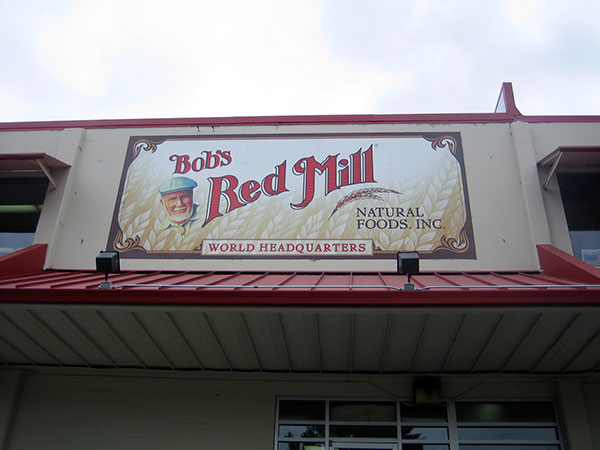
I was impressed by how seriously they take "Gluten-free" processing. The gluten-free area is completely isolated from the rest of the processing, with completely separate mills, grain bags, even fork lifts. I guess I'd never really thought about how much is involved in guaranteeing that there gluten-free products are truly 100% gluten free.
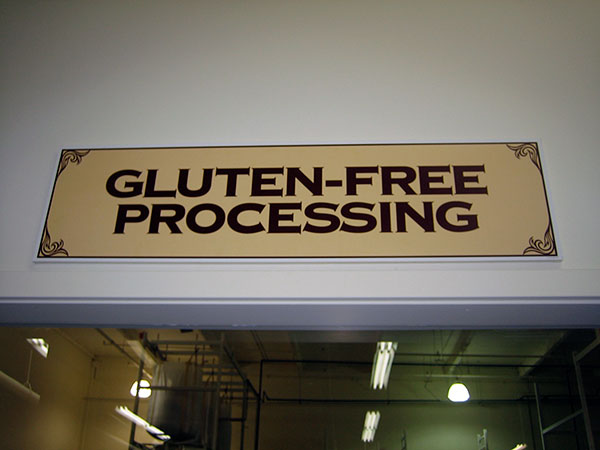
An example of one of the stone mills they use today. I believe they are Skiold mills.
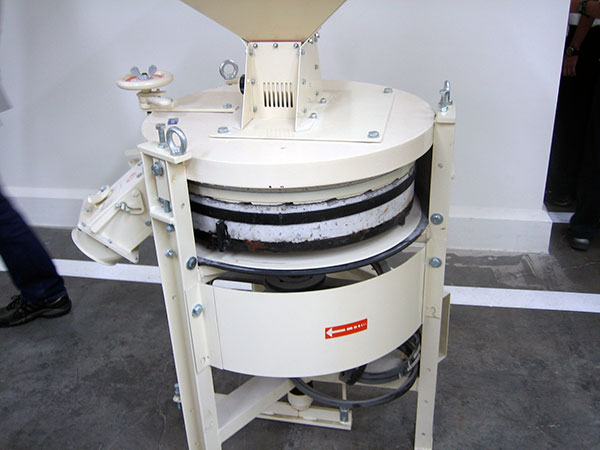
Mills at work. Not a terribly dynamic scene to photograph, but interesting nonetheless.
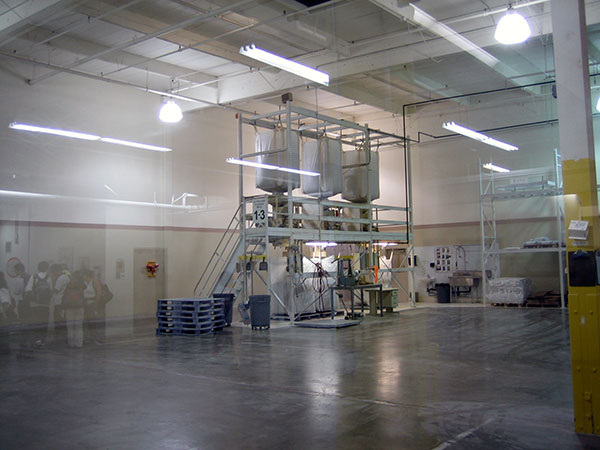
Bags of grain ready to grind.
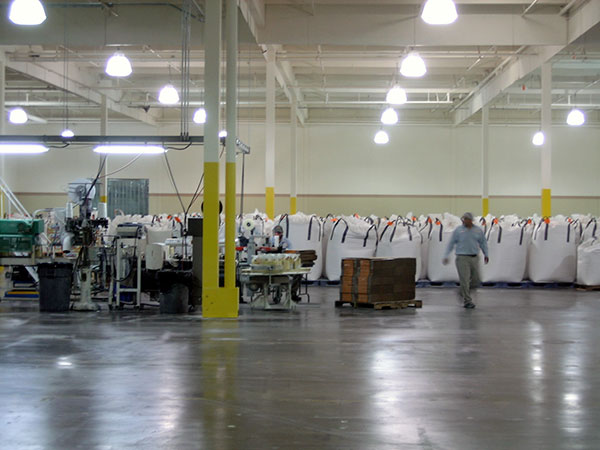
I'll admit, the exchange students were a bit bored on the tour: the five minute nutritional comparision of golden versus red flax seeds wasn't really up their alley (Niketown, however). But I enjoyed the tour and the cafe and store are awesome.


Thanks for the pics. They have an aisle for each grain variety, even sorghum? Must be a big ass store.
http://www.applepiepatispate.com
I think the banners are just decorative. Still, it is a big ass store.
I have read about Bob's Red Mill products in some of the posts on this site and they carry a couple of the Bob's Red Mill products at our local Publix supermarket, way down here in Florida.
The photos remind me a little of some of the Japanese steel mills that have only a few people, mostly montoring the computers that control the manufacturing processes.
Thanks for the photos of the mill's factory floor, very interesting. I presume those large white bags of grain get lifted, somehow, up to the hoppers of the 3 grinders located on what looks like a catwalk, with stairs, elevated above the factory floor. Were you able to see that happen? Where does the output from the grinders go?
Thanks,
Howard - St. Augustine, FL
Yes, I believe the large white bags get lifted to the top of the mills by a forklift. I did not get to see that happen. If I recall correctly (and from what I can see from the photo), the milled flour goes in the same type of jumbo white bags below.
I recall our guide telling us the bags are purchased from India made of natural fibers, used only once to prevent any kind of contamination, and then recycled. She also told us that every 3 weeks, I think, they shut each line down, tear everything apart and clean it thoroughly, and reassemble it all. An amazing amount of work goes into keeping everything sanitary and contamination proof. I was impressed.
It is a huge space and, right now, fairly empty. They just moved into this new warehouse and have a lot more room than they previously did. Obviously they have room to grow now.
Really appreciate you sharing the information re: the process. It's truly reassuring to know that there are still companies in the heartland of the U.S. that are doing such a meticulous job of "getting it right". I would love to see Red Mill's operation. Maybe someday.
In my "previous life" I did a lot of work (software development, testing and monotoring) and worked with The Boeing Company for a while and have seen the results of how efficient and effective a manufacturing process can be made through use of well designed, monotored, computerized systematic processes. From your description and photos, Red Mill has the looks of a well managed company; very clean factory floor, regular machinery maintenance, thoroughly mechanized with great attention to detail. Red Mill's business philosophy reminds me of Field of Dreams---"Build it, and they will come".
Again, thanks for taking the time to explain the process.
Howard - St. Augustine, FL
I used to be a big-time user of Bob's Red Mill flours, and I loved them. But, like Howard in Florida, they're a long way from where I live in Connecticut, and eventually I realized that the responsible thing to do was to buy more locally milled flour. :-(
Bob's is also, as far as I know, completely stone-ground flour. Floyd, can you confirm this?
Anecdote: there was a PBS series about several modern-day families trying to live in the manner of the late 19th century, really roughing it. I think the idea was to see who could last the longest, and there were some very strained situations! Oh yeah, the point: Bob's Red Mill flour was used on the series, if I recall, because it was the closest they could come to the kind of milling done a century plus ago. Of course, as you demonstrate, it's much cleaner today.
I keep wishing they'd open a mill on the East Coast!
Thanks, Floyd
Soundman (David)
Bob's is also, as far as I know, completely stone-ground flour. Floyd, can you confirm this?
Yes, I believe those Skiold mills all use stones.
There is a heck of a collection of old stone mills at the factory too. Bob found an abandoned mill up around Dufur, Oregon and bought the grinding stone.
Good info on the history here. An excerpt:
I was just over there the other day for the first time with my mother-in-law. I'm a new baker...and there is no place like Bob's for insipration. Have you been across the street to Dave's Killer Bread? Also very cool. Good bread with a good story.